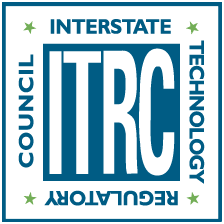Appendix B. Risk Evaluation Reference Tool
Purpose: This risk evaluation reference tool serves as a summary of the primary elements/factors that could dramatically influence risk management decisions related to TPH either by significantly overestimating or underestimating exposure risks from TPH. This tool also includes links to the key discussions within the document for each of these primary issues.
| Site Stage | Decision/Issue | Possible Impact | Over- estimate Risk | Under- estimate Risk | Reference |
|---|---|---|---|---|---|
| Preliminary/ Initial Assessment (Project Scoping)
|
1. Does sufficient knowledge exist on the type and age of the petroleum product release? 2. Has the appropriate regulatory framework governing petroleum release sites been applied? |
1. Incorrect technical approach encompassing sampling, laboratory analysis, CSM, data evaluation/interpretation, and risk assessment 2. Evaluation procedures that may be dated relative to scientific understanding or may be inconsistent among programs |
✓ | ✓ | Conceptual Site Models, Sections 5–5.2 |
| Site Characterization (Data Collection and Evaluation; Risk Assessment/ Characterization)
|
1. Does the contracting laboratory have the appropriate expertise (methods) and direction/ instruction to identify petroleum fractions? 1.b. Will the risk assessment use field data and will it be the only data used? 1.c. Has adequate consideration been given to the role of product weathering in selecting the analytical suite? 2. Is the characterization/ evaluation based on bulk TPH data (typically historic data)? |
1.a. Additional uncertainty from use of less precise or unsuitable analytical techniques 1.b. Laboratory problems, e.g., separating aliphatics/cycloalkanes from aromatics 2.a. Increased level of effort necessary to evaluate bulk TPH results if using more recent risk assessment approaches 2.b. Inappropriate selection of analytes, e.g., BTEX compounds in a highly weathered release 2. Possible double-counting between bulk fractions and indicator compounds |
✓ | ✓ | TPH Data Collection Plan |
| Site Characterization (Risk Assessment/ Characterization) | 1. Are the selected toxicity values (those for indicator chemicals, fractions, or assigned based on percent composition of known mixtures) appropriate? | 1. Incorrect conclusions from flawed assessment | ✓ | ✓ | Toxicity Assessment |
| Remedy Selection | 1. Do remedy and/or cleanup goals specifically target aromatic/light fractions and not consider residual TPH? | 1. Inappropriate remedy selection when the residual TPH is more toxic or overly conservative remedy when the TPH is less toxic | ✓ | ✓ | TPH-Specific Regulatory Challenges |
| Remedy Selection/Remedy Performance | 1. Does performance data consider only light end indicator compounds (e.g., BTEX) and not consider residual TPH? | 3.a. Inappropriate remedy selection when the residual TPH is more toxic
3.b. Inappropriate remedy monitoring to demonstrate effectiveness |
✓ | Managing Open and Reopened TPH-Contaminated Sites | |
| Remedy Complete/ Closure (Cleanup complete) | 1. Are cleanup objectives based on light end indicator compounds (e.g., BTEX) only and not residual TPH? | 1. Not meeting objectives if residual TPH was required to be addressed | ✓ | Remedial Action and Institutional Controls | |
| Long-term Management (Subject to resource/
beneficial use) |
1. Are only light end compounds (e.g., BTEX) identified as indicators? | 1. Not meeting objectives if residual TPH was required to be addressed | ✓ | Document Objectives |


